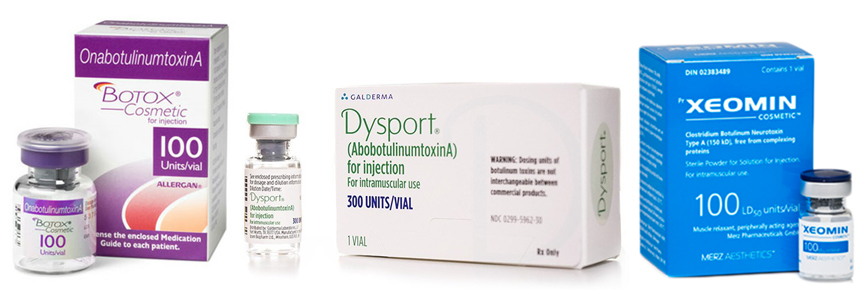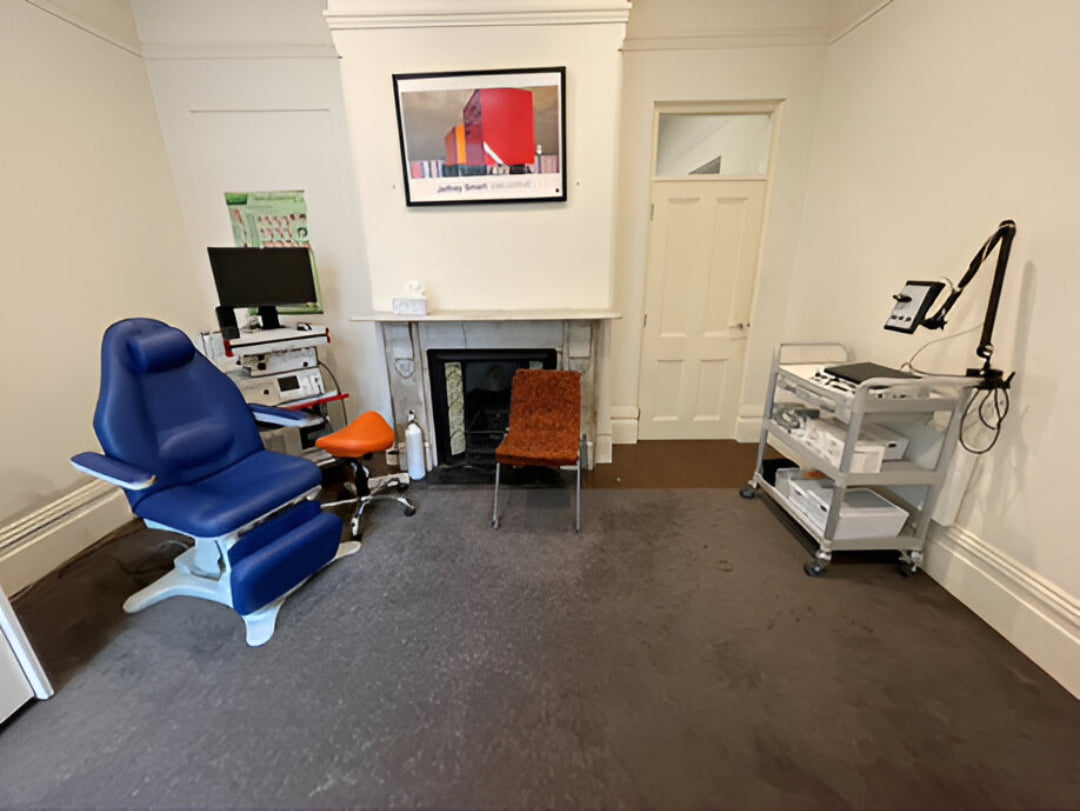
Botulinum Toxin Therapy for Laryngeal Disorders
Who is this information for?
This information is for patients, families and carers of patients who may need to undergo a Botulinum Toxin injection to the muscles of the larynx, with an MVAC ENT surgeon.
What is Botulinum Toxin?
- Botulinum Toxin or BoTox as it is more commonly known, is a very potent chemical, derived in a purified form from a bacteria, Clostridium Botulinum.
- When injected into muscles of the body in tiny doses, it causes a reversible weakening of the muscles injected by affecting the nerve endings that cause the muscles to contract. Its effects are restricted to the site of injections, and it does not cause the severe muscle weakness condition known as Botulism
- Its effects are not limited to motor (muscle movement) nerves however, and it also decreases the activity of nerves inside glands associated with the secretion of saliva and sweat.
- BoTox has also been shown to decrease the activity of certain sensory nerves associated with pain and sensitivity, which perhaps explains why it has been highly successful in the management of migraine headaches.

- There are a few different sub-types of Botulinum Toxin that vary slightly in their characteristics. Type A (Botox®, Dysport®, Xeomin®) is the most commonly used. Type B is (Myobloc®) is less commonly used and varies slightly in its properties, and is not currently available for use in Australia.
- At MVAC, We predominantly use Botox®.
Laryngeal Conditions for which you might need BoTox:
- Voice Conditions:
- Spasmodic Dysphonia (SD)
- BoTox is selectively injected into the muscles of the larynx causing the vocal spasms in this condition, causing a controlled, reversible weakening of these muscles and a smoother voice. There may also be a sensory aspect to the effectiveness of BoTox in this condition.
- Repeat injections are required for ongoing control of symptoms
- See our separate MVAC handout on Spasmodic Dysphonia for more details on this condition.
- Muscle Tension Dysphonia
- BoTox is selectively injected into the muscles of the larynx causing the tension in the voice, causing a controlled, reversible weakening of these muscles and possibly less tension in the voice. There may also be a sensory aspect to the effectiveness of BoTox in this condition.
- Unlike SD, a single injection is often adequate to provide long-term control of symptoms
- See our separate MVAC handout on Muscle Tension Dysphonia for more details on this condition
- Laryngeal Tremour
- BoTox is selectively injected into the muscles of the larynx causing the vocal tremour in this condition, causing a controlled, reversible weakening of these muscles and a smoother voice.
- The benefit is not generally as marked as seen in other BoTox treated voice conditions.
- Repeat injections are required for ongoing control of symptoms
- See our separate MVAC handout on Laryngeal Tremour for more details on this condition
- Spasmodic Dysphonia (SD)
- Airway Conditions:
- Chronic Cough
- The role of BoTox in chronic cough is less well established, but small studies have shown significant benefits in some patients. Further long-term studies are currently underway.
- BoTox is selectively injected into the muscles of the larynx that cause closure of the vocal cords during coughing, thus causing a controlled, reversible weakening of the cough. There may also be a sensory aspect to the effectiveness of BoTox in this condition, and in some cases, sensory nerve endings in the throat are targeted with BoTox, rather than the muscles themselves.
- Vocal Cord Dysfunction (Inducible Laryngeal Obstruction)
- BoTox is selectively injected into the muscles causing vocal cord closure, on one or both sides. This causes a controlled, reversible, weakening of the inappropriate excessive closure of the vocal cords during breathing.
- As with MTD and Chronic Cough, there may also be a sensory aspect to the effectiveness of BoTox in this condition.
- See our separate MVAC handout on Vocal Cord Dysfunction for more details on this condition.
- Chronic Cough
- Swallowing Conditions:
- Excess Salivation:
- BoTox is selectively injected into the major salivary glands of the Head & Neck (parotid glands, submandibular glands), which are responsible for the majority of saliva production, causing a controlled reduction in the amount of saliva produced.
- The benefit from these injections can last 6-12 months, and repeat injections are sometimes required for ongoing control of symptoms.
- Cricopharyngeal Dysfunction (CPD)
- BoTox is selectively injected into the ring-like cricopharyngeal muscle which sits behind the larynx, at the top of the oesophagus.
- This injection is usually performed under a General Anaesthetic for greater precision and patient comfort.
- Excess Salivation:
How is it administered?
The Botox Team @ MVAC
At MVAC , for your Botox Treatments, you will receive the care & expertise of both:
- an ENT Surgeon specialising in Voice Airway & Swallowing disorders,
- a Neurologist specialising in neurophysiology and movement disorders.
These two clinicians will work together on the day to ensure an optimum level of care.
EMG Guidance:
- Electromyography (EMG) is a well established technique that detects and records the electrical activity of muscle cells/fibres in the body.
- Sometimes it is used as a diagnostic tool to detect various nerve and muscle conditions.
- In BoTox injections it is used as a needle ‘guide’.
- Through the same needle that the ENT surgeon uses to inject the BoTox, an electrical signal from the muscles in your larynx is detected and observed by the Neurologist/ENT. This helps guide the BoTox injection into the correct muscle, and into the optimum position within that muscle. Where muscles are not the target of the BoTox (g. Salivary glands), the EMG helps the team avoid inadvertent injections into important muscles of swallowing, breathing or voice.
Type of Anaesthetic:
- Often-times no anaesthetic is required as the injections are brief and the needles are very fine. It is usually no more painful than a vaccination shot.
- Local Anaesthetic Injection:
- Sometimes, a small amount of local anaesthetic is injected into the skin of the neck, where the BoTox needle will enter.
- Sometimes, a small amount of local anaesthetic is injected through the skin of the neck, into the windpipe to help ‘numb’ the lining of the throat, so that you are not too uncomfortable and your vocal cords are relatively still when the BoTox needle enters the airway/muscles.
- General Anaesthetic Injection:
- In some circumstances, it is better to perform the injection with you completely asleep and unaware, i.e. a General Anaesthetic. This may be because the muscle is easier to access when you are asleep, or because the procedure is easier for you when you are asleep. In this situation, you would be admitted to one of our hospitals for a brief day procedure, and would be able to go home the same day.
- Local Anaesthetic Injection:
BoTox Injection:
- The Botulinum Toxin is carefully diluted immediately prior to your procedure and dosed to your specific requirements.
What will I experience (Local Anaesthetic Injection)?
Before the procedure:
- The Admin team will instruct you to have nothing to eat or drink for 2 hours prior to your appointment, in order to minimise the chance of nausea/vomiting.
- It is best to wear comfortable clothes and shoes to your appointment

During the procedure:
What are the risks?
Generally speaking, BoTox injection to the larynx is a very safe and well tolerated procedure, whether under local or general anaesthetic. However, you should discuss the following possible complications with your doctor if there is anything you do not understand.
- Complications of Anaesthesia
As this procedure is sometimes performed using a combination of local anaesthetics, every care is taken to ensure that maximum safe doses for these agents are strictly adhered to. However, there is a very small risk of local anaesthetic being absorbed into the bloodstream where it may cause adverse effects on the heart and brain, leading rarely to decreased heart rate, seizures, and cardiac arrest. - General Complications of any operation
- Pain: Most patients do not experience significant pain during or after this procedure. However, there may be some minor throat discomfort which will improve over a few days. Simple over-the-counter pain relievers should be adequate. Occasionally, patients experience a dull earache during injections into the vocal fold itself, which is generally short-lived.
- Bleeding: There may be minor bleeding in the skin at the injection site on the front of the neck. Bleeding in the airway is also uncommon and generally minor if it occurs. However, a large bruise may cause swelling of the airway, and breathing problems (SEE BELOW).
- Infection: The chance of infection either in the larynx or at the skin is very low. The skin of the front of the neck is always cleansed with an antiseptic agent prior to any injections.
- Specific Complications of this operation
- Breathing problems: Breathing problems occur infrequently during the procedure, but spasm of the vocal cords or the lower airways in the lungs may occur. These episodes are generally self-limited but may require temporary supplemental oxygen or a nebulized medicine to ‘open up’ the airways. Very rarely, an emergency procedure to immediately open the airway through the neck may be required. In the 24-72 hours after the procedure, there is a very small chance of swelling or bruising of the airway, which may cause breathing problems. You should immediately call 000 or attend the nearest Emergency Department if this occurs.
- Voice problems: Where BoTox is placed into the vocal cords, it is expected that your voice will weaken a few days after the injection. This weakness is usually mild, but rarely may be quite significant, making it difficult to speak loudly. This expected weakness may last days to weeks, but will always spontaneously resolve.
- Swallowing Problems: When weakened by BoTox, the laryngeal muscles may no longer completely protect the airway from food when swallowing. You may find that you have some difficulty when swallowing liquids for a few weeks after laryngeal BoTox. It is usually minor, and resolves spontaneously. Taking small sips, and not drinking when on the move will help. Rarely, significant, but reversible swallowing problems can occur, and it is important to contact your MVAC team or GP in this case.
- Fainting: Whilst the chance of fainting during the procedure is low (1% of the time), it is the most common complication associated with this procedure. If it occurs, your MVAC team will place you in a lying-down position, give you oxygen, and take your vitals. Recovery is generally rapid and spontaneous.
What should I do about my medication?
Let your MVAC doctor know about all the medication you take and follow their advice.
This includes all blood-thinning medication as well as herbal and complementary remedies, dietary supplements, and medication you can buy over the counter.
Where safe, your MVAC doctor may ask you to withhold certain blood thinning medications prior to the procedure, in order to reduce the risk of bleeding/bruising in the airway.
What are the alternatives?
Alternative therapies available will depend on the underlying condition being treated, and will usually have been explored with you prior to BoTox, but may include:
- Therapy through a Voice therapist/Speech Pathologist:
- E.g. Voice therapy for spasmodic dysphonia or tremour
- E.g. Laryngeal desensitisation therapy for chronic cough, irritable larynx
- E.g. Laryngeal retraining for Vocal cord dysfunction, EDAC
- Medical Treatments
- E.g. Propranolol for Tremour
- E.g. Nortriptyline, Gabapentin for Cough
- Procedural Treatments:
- E.g. Superior Laryngeal Nerve block for Chronic Cough, Odynophonia
Further information:
Please contact the MVAC rooms if you require any further information, or have any further concerns.
If an emergency, or afterhours, do not hesitate to call 000 or attend your closest emergency department.